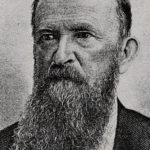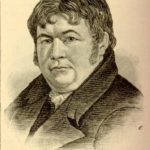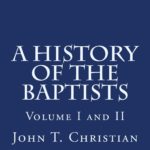Description
THE LIFE AND LABORS
OF
ST. PATRICK
BY
WILLIAM CATHCART, D. D.
1894
Contents
CHAPTER I. THE GOSPEL IN IRELAND BEFORE ST. PATRICK’S DAY. 3
CHAPTER II. Britain st. Patrick’s country. 7
CHAPTER III. ST. PATRICK AS A MISSIONARY. 12
CHAPTER IV. Patrick’s supposed mission from rome. 20
CHAPTER V. Patrick’s roman commission unauthenticated. 27
CHAPTER VI. FOREIGN APPEALS TO ROME. 34
CHAPTER VII. PAPAL APPEALS IN GAUL AND IRELAND. 38
CHAPTER VIII. St. Patrick’s missionary qualifications. 44
CHAPTER IX. St. Patrick’s missionary qualifications (Continued). 52
CHAPTER X. St. Patrick’s great work, and his exalted worth. 61
CHAPTER XI. St. Patrick’s confession, and his letter to coroticus. 67
CHAPTER XII. THE “CONFESSION” OF St. PATRICK, OR “THE EPISTLE TO THE IRISH.” 69
CHAPTER XIII. St. Patrick’s confession (Continued). 73
CHAPTER XIV. St. Patrick’s confession (Continued). 76
CHAPTER XV. St. Patrick’s confession (Continued). 80
CHAPTER XVI. St. Patrick’s confession (Concluded). 84
CHAPTER XVII. Patrick’s epistle to coroticus. 89
CHAPTER XVIII. St. PATRICK AND BAPTISM. 95
CHAPTER XIX. St. PATRICK HELD THE LEADING DOCTRINES OF THE BAPTIST DENOMINATION. 101
CHAPTER I. THE GOSPEL IN IRELAND BEFORE ST. PATRICK’S DAY.
King Cormac rejects idolatry long before Patrick’s arrival—British women in Ireland—A believing family immersed—Ccelestius an Irishman—Bishop Colman—Sir W. Betham—Patrick’s testimony.
Ireland, so near the coast of Britain, and so full of warriors, wizards, and idolatrous agencies and objects, was well known to the churches of Britain, and without doubt often occupied their thoughts and enlisted their supplications. The Romans never attempted its conquest; and it is probable that the Christian Britons were deterred from adequate efforts to secure the conversion of a savage people outside the protection of the Roman legions. That they made the attempt, however, more than once, in some form, their invincible zeal and historical facts assure us. St. Patrick was brought up in a Christian family in Britain, where he was born, and the truth which saved him when a youthful slave in pagan Ireland was taught him in the godly home of Deacon Calpurnius, his father, and in the church of which he was a member and officer. When he escaped from slavery and returned to his home, and once more enjoyed Christian society his believing experience was greatly enlarged, and his reliance upon Christ strengthened; and soon he was persuaded that he must become a missionary to the Irish. His family, while probably approving of his zeal, was alarmed at the prospect before him. Slemish, the mountain, with its swine, guarding which he spent six dreary years, in snow, in drenching rain, in rags, and in pinching hunger, by day and by night, reared its rugged sides and black summit before them in horror. And still more fatal dangers were presented to their imaginations, and full of fears for his safety, they entreated him to stay with them. They offered him gifts; and when these and pressing appeals failed, they resorted to threatenings and imprisonment; and as Patrick in his “Confession” calls himself a “fugitive,” it is supposed that the resolute young Briton had to fly from his home to enter upon his great work of saving Ireland. This was the spirit of many saints who carried the gospel over Britain until its people were converted, and probably of several others who proclaimed the glad tidings in Ireland.
In the beginning of his “Confession,” St. Patrick says: “I was taken as a slave into Ireland with so many thousands of men, according to our deserts.” This was not a solitary raid from Ireland, though a large one. Man-stealing and coast robbery were common. In this way many British Christians, nominal and real, were scattered over that country. “The Four Masters’ Annals of the Kingdom of Ireland” tells us, at a. d. 266, that—
Forty years was Cormac, the son of Art, the son of Conn, in the sovereignty of Ireland when he died at Cleiteach, the bone of a salmon sticking in his throat, on account of the Siabhradh [Genii] which Maelgenn, the Druid, incited at him, after Cormac had turned against the Druids on account of the adoration of God in preference to them. Wherefore a devil attacked him at the instigation of the Druids.
He left express orders that he should not be buried with his idolatrous ancestors. Cormac was apparently a Christian.
After Patrick had arrived in Ireland as a missionary, on one occasion he left Lomman in charge of his vessel, while he went away for some days. During his absence,—
Lomman was reading the gospel aloud, when Fortchern, son of Fodilmid, admiring the gospel and its teaching, forthwith believed, and the well being open, he was baptized in that place by Lomman.
He remained there with him until his mother came in search of him and she was rejoiced to see him, for she was a Britoness. She also believed, and returned again to her house and told her husband everything that happened to her and to her son, and Fedilmid rejoiced in the coming of the clergyman, because his mother wus British, a daughter of Scoth Noe, the king of the Britons. Then Fedilmid greeted Lomman in the British tongue, asking him about his rank, faith, and kindred. And he answered: “I am Lomman, a Briton, a Christian, a disciple of Bishop Patrick, who was sent by the Lord to baptize the people of Ireland, and turn them to the faith of Christ, who sent me here according to the will of God.” And immediately Fedilmid believed, with his whole family, and he made an offering to him, and to St. Patrick, of his lands, his possessions, and his substance, with all his rights as a chieftain over his followers.[i]
This evidently truthful quotation is from “Additions to the Collections of Tirechan,” a valuable work written in the ninth century. These Christians of British blood represented multitudes from Albion, some of whom bore witness in Ireland to the power and peace of the gospel during perhaps three hundred years of Hibernian paganism.
Coelestius,[ii] an Irishman, born in the fourth century, became a Christian, and during a large part of the first half of the fifth, he was one of the most active men in Europe or Asia. Accepting the heretical opinions of Pelagius, he was untiring in his efforts to spread and defend them.
In the “Additions to Tirechan’s Collections,” it is written: “Colman, a bishop, presented to Bishop Patrick, his church at Cluain Cain, in Achud Cain, as an offering devoted to him forever; and he committed it to the holy men, presbytef Medb and presbyter Sadb.”[iii] Neither Patrick nor his assistants had ever conducted the services of this church. Its ownership and use were exclusively Colman’s. He was evidently a missionary Briton, laboring in Ireland before Patrick’s arrival; or else he came to it independently of Patrick.
Soames gives the general verdict of scholars about Christianity in Ireland, when, in speaking of the arrival of Palladium in A. d. 431, he says: “The truth is, that a few Christian congregations, regularly organized under bishops, had existed in the south of Ireland from some very remote period.”[iv]
Dr. William Lindsay Alexander, a Scotch writer of historical ability, states that,—
Patrick was not, indeed, the apostle of Ireland, for Christianity existed there before his arrival. It is nevertheless certain that he found the greater part of the island so utterly destitute of its influence, that to him was granted a degree of success such as none of his predecessors had attained.[v]
The late distinguished scholar, Sir William Betham, in his “Antiquarian Researches,” states that Ireland was Christianized by St. Patrick long before the year A. d. 432, the date assigned by most of the analysts, and the writers of his “Lives,” for the commencement of his labors in it. We have no doubt that St. Patrick began his ministry in Ireland in the end of the fourth century, and not in a. d. 432; and there is a moral certainty that long before his day there were Christians in Ireland.
Toward the end of his “Confession,” Patrick clearly intimates this; “I travel amongst you” [he says to his converts] “even to remote places, where no one has ever come to baptize, ordain clergymen, or edify the people.” From these words it seems evident that some others in places more easily reached had performed these sacred duties.
CHAPTER II. Britain st. Patrick’s country.
Kingdom of Strathclyde—Dumbarton Patrick’s birthplace—Whitley Stokes—Joceline—Griraldus Cambrensis—Roman coins found in Ireland—Irish piratical attacks on Caledonia—Miliuc Patrick’s owner—The Irish kingdom in Caledonia—Patrick’s testimony.
From an early period there was a large British population, from Cumberland, England, into Dumbarton, Scotland, out of which the kingdom of Strathclyde was constituted. Its people maintained their own sovereignty with some modifications until the eleventh century. All Britain was divided by the Romans into seven provinces, only five of which were permanently under them.[vi] They left it for the lad time in A. d. 423, having returned after their previous withdrawal to render temporary military help to their sorely pressed British friends.
Dumbarton, in Scottish Gaelic, is Dun Bhreatuin, the city of the Britons. Bede describes it as “The strong city of the Britons, standing in his day, called Alcluith,” which in their (British) language signifies the rock Cluith, for it is close to the river of that name. It formed the western termination of the Roman wall, built by As;ricola, A. d. 80, which extended from the Firth to the Clyde.
St. Patrick, in the beginning of his celebrated “Confession,” says: “I had Calpurnius, a deacon, for my father, who was the son of the late Potitus, a presbyter, who resided in the village of Banaven Tabernise; for he had a little farm adjacent where I was captured. I was then nearly sixteen years of age.” The country from which the youthful Patrick was forcibly carried has given rise to much discussion. The only two quarters for which arguments worthy of the name are employed are Great Britain and Gaul, as France was called in ancient times. His traditional residence for some time in Gaul, and his love, expressed in the “Confession,” for the godly brethren of that country, are the chief reasons alleged for claiming it as his birthplace. Against France, and in favor of Britain, Patrick and others furnish evidence which cannot be resisted. His birth took place in or near Dumbarton, among the Strathclyde Britons,[vii] and though the place of his birth is now in Scotland, ages before Patrick was born, and ages after, it belonged to the Britons, from whom Patrick himself sprang.
In the piratical raid in which Patrick was seized, he tells us in his “Confession” that “He was carried into slavery in Ireland with many thousand men.”
This man-stealing expedition would have met with serious, if not insuperable, difficulties in transporting these thousands of captives from Gaul to Ireland. Irish ships in that period were chiefly “coracles,” made of the skins of beasts and wicker (willow) rods; a kind of boat, frail as it may seem, which is still frequently used in Arran, Achill, and the western coast of Ireland.[viii] Though the Irish made long and dangerous voyages in these hide-covered basket ships, yet the conveyance of some thousands of unwilling and vindictive captives over the wide sea separating France from Ireland in any mere raid seems extremely doubtful. Dr. Whitley Stokes in his introduction to “The Tripartite Life of St. Patrick,” p. 137, says:
The least improbable statements about Patrick are that he was born about 373 [more probably about A. d. 360], at Nemptor, which may have been the older name for Ail Cluade, “Rock of Clyde,” now Dumbarton. Sucat, the saint’s baptismal name, is the modern Welsh Hygad, “warlike,” some of whose exploits may have helped to form the legend of our saint.
Joceiine (Vit. Pat., cap. 7), in the twelfth century, speaking of Nempthur, Patrick’s reputed birthplace, states that “ It was in the valley of the Clyde, and was usually called by the people Dunbretan, or Mom Britonum, the hill of the Britons,” Dumbarton. Giraldus Cambrensis, a learned Welsh ecclesiastic, for some time a resident of Ireland during its partial conquest in the twelfth century by the forces of the English king, gives undoubtedly the universal tradition of the Irish about Patrick, when he writes: “Patrick, a native of Britain, and a man eminent for the sanctity of his life.”[ix] Neander follows with the same testimony:
The place of Patrick’s birth was Bonnaven, which lay between the Scottish towns Dumbarton and Glasgow [they are about fifteen miles apart], and was then reckoned to the province of Britain… At the age of sixteen he with many others of his countrymen was carried off by Scottish [the name of the Irish then] pirates to the northern part of Hibernia, and sold to a chieftain.[x]
From the coast of Antrim in Ireland to Dumbarton on the Clyde, the space is crossed by a steamer in a few hours; from the cliffs of the Antrim coast the houses in the nearest part of Scotland can be seen. The Irish Scots made many piratical attacks upon the territories of the Picts and their British neighbors in what is now called Scotland. In the latter half of the fourth century these expeditions inflicted such widespread and intolerable injuries upon them that the Romans made extraordinary efforts by land and sea to stop assaults from Caledonia and Ireland upon their five sections of Britain.
Some of the plunder carried off by the Irish Scots, probably from Dumbarton and its neighborhood, has been found within fifty years at the Giant’s Causeway and Coleraine, about forty miles from Belfast, and elsewhere in Ireland. At the Causeway in 1831, two hundred Roman coins were discovered, extending from Vespasian, a. d. 70, to the Antonines, a. d. 160. At Coleraine, in 1854, two thousand Roman coins were found and two hundred ounces of silver; the coins were all of the fourth and fifth centuries, ending with Honorius by whom Britain was surrendered by the Romans.[xi]Numerous discoveries of Roman coins have been made in the same section, in Ulster, and in other parts of Ireland, though the Romans never came to it except as captives in company with Picts and Britons.
In plundering raids against the Dumbarton Britons, in the latter half of the fourth century, thousands of captives were probably landed on the coast between the mouth of the River Baun—which runs through Coleraine to the sea, three miles distant—and Larne; this line of coast would measure about thirty miles, and it has several small natural havens. Some of the coins in the Coleraine collection probably came over in the expedition that brought Patrick into captivity. He became the slave of Miliuc, a petty king of North Dalaradia. He lived in a valley near the hill of Slemish, now called the valley of the Braid, from the river that runs through it. There is a township in the valley still called Ballyligpatrick, or the town of Patrick’s Hollow; in it are some remains of an Irish chieftain’s fort.[xii] It is five miles from Ballymena, and fifteen from Coleraine. It is in the centre of County Antrim; the other district of Antrim, called Dalriada, embraced the glens of Antrim and the coast from Coleraine to Larne, not far from Belfast. It is not unlikely that in some little harbor between the Causeway and the mouth of the Bann, Patrick’s men-stealers disembarked; indeed, it is possible that his coracle, in company with others, ascended the Bann itself to the rocky barrier across the river called the “Cutts,” above Coleraine, and there first touched the country which gave him years of degradation and suffering, and a long life afterward of widespread gospel triumphs. The men of Dalriada and Dalaradia were heroes in courage and Northmen in cruelty; the Romans as well as the inhabitants of Great Britain had often lamented their fierceness in battle. Their strip of coast frequently witnessed the triumphant return of their frail vessels dangerously freighted with spoils and captives. These were the men who, early in the sixth century, established the kingdom of Argyle in Scotland, which eventually extended its dominion over that entire country. Even Bede, the Englishman, who died in 735, writes of this kingdom:
In process of time, Britain, besides the Britons and the Picts, received a third nation, the Scots (Irish), who migrating from Ireland, under their leader, Reuda, either by fair means or by arms, secured for themselves the settlements among the Picts, which they still possess. Prom the name of their commander, they are to this day called Dalreudins.[xiii]
Patrick in his “Confession,” says: “Again, after a few years, I was in the Britains with my parents, who received me as a son, and earnestly besought me, that now, at least, after the many hardships I had endured, I would never leave them again.” Patrick unquestionably speaks of the Britains as the home of his parents from which they besought him to never depart. Again, writing in the “Confession” of converts in Ireland, he says: “Wherefore, though I could wish to leave them, and had been most willingly prepared to proceed to the Britains as to my country and parents; and not that only, but even to visit the brethren in the Gauls, and to see the face of the saints of my Lord.” Patrick could not more emphatically pronounce himself a Briton; and as if he wished to refute the statement to be made by some in future ages that he was a native of Brittany, in France, he speaks of the Britains as entirely distinct from France, and he uses the plural Gauls, which included every part of France, even that subsequently known as Brittany. But no section of France was the home of any considerable body of Britons so as to give it their name, until Patrick was in his grave. Britons, flying from the victorious Angles, Jutes, and Saxons, and from their ruined homes and slain kindred, found a refuge in Gaul in the sixth century; and after its settlement by them it was called “Cornwall,”[xiv] and the “Lesser Britain.” There are strong reasons for accepting the statement at the beginning of the celebrated “Tripartite Life of Patrick”: “As to Patrick, then of the Britons of Ail Cluade, Dumbarton was his origin.”
[i] In “Government Tripartite Life,” Vol. II., pp. 334, 335.
[ii] Jerome’s “Proemium,” in Lib. III. Comment, in “Jeremiam,” Tom. V., p. 137 “Froben. Bal.,” a. d. 1516.
[iii] In “Government Tripartite Life,” Vol. II., p. 337.
[iv] Soames’ “Latin Church,” p 53. London,
[v] “The Ancient British Church,” p. 162. London.
[vi] “Richard of Cirencester,” Lib. I., cap. 6.
[vii] Ussher’s “Work,” Vol. VI., pp. 375, 376. Erlington ed.
[viii] “Ireland and the Celtic Church,” p. 115. Dublin, 1888.
[ix] “The Topography of Ireland,” Dist. III., cap. 16.
[x] Neander’s “General History,” Vol. II., p. 122.
[xi] “Ireland and the Celtic Church,” p. 16.
[xii] Reeves’ “Antiquities of Down and Connor,” pp. 83, 84.
[xiii] “Eccles. His.,” Lib. I., cap. 1.
[xiv] Gibbon’s “Decline and Fall,” Vol. II., p. 474. McGowan.






Reviews
There are no reviews yet.